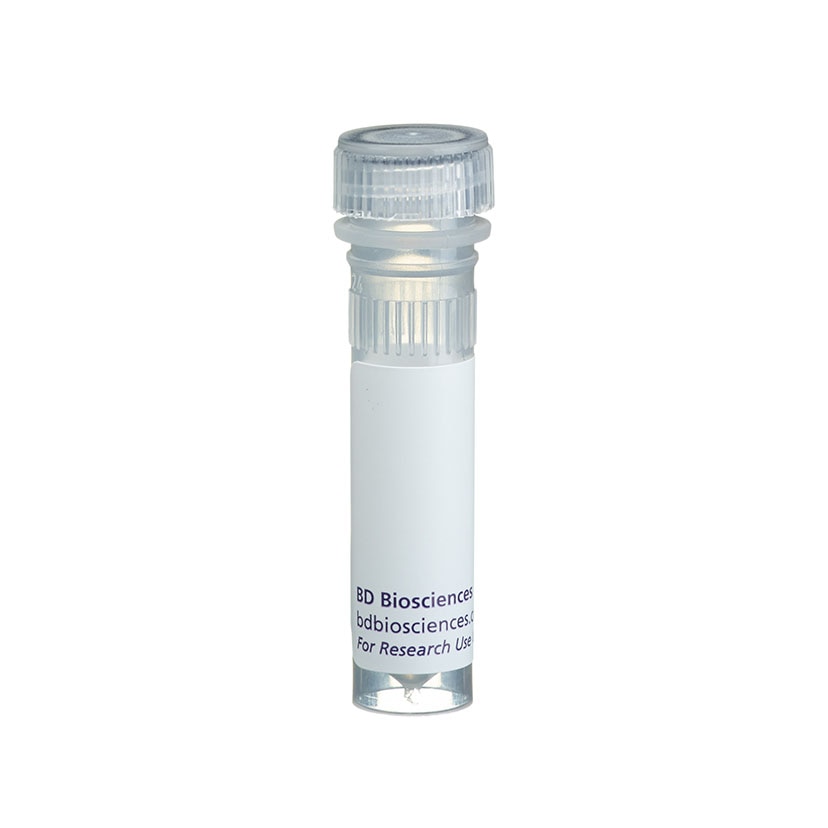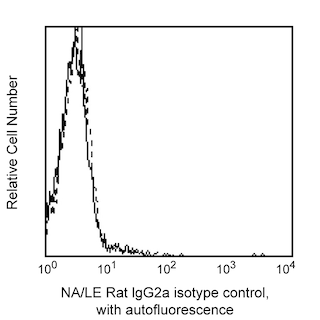-
Reagents
- Flow Cytometry Reagents
-
Western Blotting and Molecular Reagents
- Immunoassay Reagents
-
Single-Cell Multiomics Reagents
- BD® OMICS-Guard Sample Preservation Buffer
- BD® AbSeq Assay
- BD® Single-Cell Multiplexing Kit
- BD Rhapsody™ ATAC-Seq Assays
- BD Rhapsody™ Whole Transcriptome Analysis (WTA) Amplification Kit
- BD Rhapsody™ TCR/BCR Next Multiomic Assays
- BD Rhapsody™ Targeted mRNA Kits
- BD Rhapsody™ Accessory Kits
- BD® OMICS-One Protein Panels
-
Functional Assays
-
Microscopy and Imaging Reagents
-
Cell Preparation and Separation Reagents
-
- BD® OMICS-Guard Sample Preservation Buffer
- BD® AbSeq Assay
- BD® Single-Cell Multiplexing Kit
- BD Rhapsody™ ATAC-Seq Assays
- BD Rhapsody™ Whole Transcriptome Analysis (WTA) Amplification Kit
- BD Rhapsody™ TCR/BCR Next Multiomic Assays
- BD Rhapsody™ Targeted mRNA Kits
- BD Rhapsody™ Accessory Kits
- BD® OMICS-One Protein Panels
- Denmark (English)
-
Change country/language
Old Browser
This page has been recently translated and is available in French now.
Looks like you're visiting us from United States.
Would you like to stay on the current country site or be switched to your country?
BD Pharmingen™ Purified NA/LE Rat Anti-Mouse CD366 (TIM-3)
Clone RMT3-23 (RUO)

Flow cytometric analysis of Recombinant Mouse TIM-3 protein binding blockade to phosphatidylserine expressed on apoptotic Mouse thymocytes by Purified NA/LE Rat Anti-Mouse CD366 (TIM-3) antibody. BALB/c Mouse thymocytes were cultured in the presence of 1 µM of Dexamethasone for 5 h (37°C) to induce apoptosis. Apoptotic thymocytes (1 x 10^6 cells/0.1 ml final volume) were mixed with Recombinant Mouse TIM-3 Fc Chimera Protein (5 µg test dose; R&D Systems, Cat. No. 1529-TM-050) preincubated (30 min 4°C) with either Purified NA/LE Rat Anti-Mouse CD366 (TIM-3) antibody (Cat. No. 569318; Solid Line) or Purified NA/LE Rat IgG2a Isotype Control (Cat. No. 554687; Dotted Line) at the indicated test doses. The cells were washed and secondarily stained with Biotin Goat Anti-Human IgG, Fc fragment specific (Biotin Anti-Human IgG Fc; Jackson ImmunoResearch, Cat. No. 109-065-190) followed by PE Streptavidin (Cat. No. 554061). The graphs showing the percentage of cells bound with Recombinant TIM-3+ (% Recombinant TIM-3+ Cells) after preincubation with TIM-3-specific Blocking Antibody (or Ig Isotype Control) were derived from gated events with the forward and side light-scatter characteristics of apoptotic thymocytes. Flow cytometry and data analysis were performed using a BD LSRFortessa™ X-20 and FlowJo™ software. Data shown on this Technical Data Sheet are not lot specific.


Flow cytometric analysis of Recombinant Mouse TIM-3 protein binding blockade to phosphatidylserine expressed on apoptotic Mouse thymocytes by Purified NA/LE Rat Anti-Mouse CD366 (TIM-3) antibody. BALB/c Mouse thymocytes were cultured in the presence of 1 µM of Dexamethasone for 5 h (37°C) to induce apoptosis. Apoptotic thymocytes (1 x 10^6 cells/0.1 ml final volume) were mixed with Recombinant Mouse TIM-3 Fc Chimera Protein (5 µg test dose; R&D Systems, Cat. No. 1529-TM-050) preincubated (30 min 4°C) with either Purified NA/LE Rat Anti-Mouse CD366 (TIM-3) antibody (Cat. No. 569318; Solid Line) or Purified NA/LE Rat IgG2a Isotype Control (Cat. No. 554687; Dotted Line) at the indicated test doses. The cells were washed and secondarily stained with Biotin Goat Anti-Human IgG, Fc fragment specific (Biotin Anti-Human IgG Fc; Jackson ImmunoResearch, Cat. No. 109-065-190) followed by PE Streptavidin (Cat. No. 554061). The graphs showing the percentage of cells bound with Recombinant TIM-3+ (% Recombinant TIM-3+ Cells) after preincubation with TIM-3-specific Blocking Antibody (or Ig Isotype Control) were derived from gated events with the forward and side light-scatter characteristics of apoptotic thymocytes. Flow cytometry and data analysis were performed using a BD LSRFortessa™ X-20 and FlowJo™ software. Data shown on this Technical Data Sheet are not lot specific.

Flow cytometric analysis of Recombinant Mouse TIM-3 protein binding blockade to phosphatidylserine expressed on apoptotic Mouse thymocytes by Purified NA/LE Rat Anti-Mouse CD366 (TIM-3) antibody. BALB/c Mouse thymocytes were cultured in the presence of 1 µM of Dexamethasone for 5 h (37°C) to induce apoptosis. Apoptotic thymocytes (1 x 10^6 cells/0.1 ml final volume) were mixed with Recombinant Mouse TIM-3 Fc Chimera Protein (5 µg test dose; R&D Systems, Cat. No. 1529-TM-050) preincubated (30 min 4°C) with either Purified NA/LE Rat Anti-Mouse CD366 (TIM-3) antibody (Cat. No. 569318; Solid Line) or Purified NA/LE Rat IgG2a Isotype Control (Cat. No. 554687; Dotted Line) at the indicated test doses. The cells were washed and secondarily stained with Biotin Goat Anti-Human IgG, Fc fragment specific (Biotin Anti-Human IgG Fc; Jackson ImmunoResearch, Cat. No. 109-065-190) followed by PE Streptavidin (Cat. No. 554061). The graphs showing the percentage of cells bound with Recombinant TIM-3+ (% Recombinant TIM-3+ Cells) after preincubation with TIM-3-specific Blocking Antibody (or Ig Isotype Control) were derived from gated events with the forward and side light-scatter characteristics of apoptotic thymocytes. Flow cytometry and data analysis were performed using a BD LSRFortessa™ X-20 and FlowJo™ software. Data shown on this Technical Data Sheet are not lot specific.


BD Pharmingen™ Purified NA/LE Rat Anti-Mouse CD366 (TIM-3)

Regulatory Status Legend
Any use of products other than the permitted use without the express written authorization of Becton, Dickinson and Company is strictly prohibited.
Preparation And Storage
Product Notices
- Please refer to www.bdbiosciences.com/us/s/resources for technical protocols.
- Since applications vary, each investigator should titrate the reagent to obtain optimal results.
- Please refer to http://regdocs.bd.com to access safety data sheets (SDS).
- An isotype control should be used at the same concentration as the antibody of interest.
Data Sheets
Companion Products



The RMT3-23 monoclonal antibody specifically recognizes CD366 which is also known as TIM-3 (T-cell immunoglobulin and mucin domain-containing 3, T-cell immunoglobulin mucin receptor 3, or T-cell membrane protein 3). CD366 (TIM-3) is ~31 kDa type I transmembrane glycoprotein encoded by Havcr2 (Hepatitis A virus cellular receptor 2) that belongs to the TIM family within the immunoglobulin superfamily (IgSF). CD366 (TIM-3) is comprised of one Ig-like V-type domain followed by a serine/threonine-rich mucin stalk region in its extracellular region, a transmembrane segment, and a tyrosine phosphorylation motif in its cytoplasmic tail. CD366 (TIM-3) expression is upregulated on subpopulations of activated myeloid cells including macrophages, monocytes, dendritic cells (DC), microglia, mast cells as well as on Type-1 CD4+ (Th1-like) T cells, cytotoxic CD8+ T cells, regulatory T cells (Treg), and natural killer (NK) cells. CD366 (TIM-3) functions as an inhibitory receptor that helps maintain immunological homeostasis and self-tolerance. It may also serve an immune checkpoint molecule that inhibits antitumor immunity and promotes T cell exhaustion. Crosslinking of cell surface CD366 (TIM-3) by Galectin-9 binding downregulates Th1-like and CD8+ T cell responses and can promote Treg or myeloid-derived suppressor cells. CD366 (TIM-3) enables DC to bind phosphatidyl serine expressed by apoptotic cells, phagocytize these cells to suppress inflammation and promote antigen cross-presentation. CD366 (TIM-3) can also bind to high mobility group protein B1 (HMGB1) and inhibit stimulation of the immune response to nucleic acids released by dying tumor cells. RMT3-23 reportedly recognizes CD366 (TIM-3) derived from either BALB/c or C57BL/6 mice that have different Havcr2 polymorphisms.
Development References (11)
-
Anderson AC, Joller N, Kuchroo VK. Lag-3, Tim-3, and TIGIT: Co-inhibitory Receptors with Specialized Functions in Immune Regulation.. Immunity. 2016; 44(5):989-1004. (Biology). View Reference
-
Anderson AC, Xiao S, Kuchroo VK. Tim protein structures reveal a unique face for ligand binding.. Immunity. 2007; 26(3):273-5. (Biology). View Reference
-
Chiba S, Baghdadi M, Akiba H, et al. Tumor-infiltrating DCs suppress nucleic acid-mediated innate immune responses through interactions between the receptor TIM-3 and the alarmin HMGB1.. Nat Immunol. 2012; 13(9):832-42. (Biology). View Reference
-
Nakae S, Iikura M, Suto H, et al. TIM-1 and TIM-3 enhancement of Th2 cytokine production by mast cells.. Blood. 2007; 110(7):2565-8. (Clone-specific: Flow cytometry). View Reference
-
Nakayama M, Akiba H, Takeda K, et al. Tim-3 mediates phagocytosis of apoptotic cells and cross-presentation. Blood. 2009; 113(16):3821-3830. (Clone-specific). View Reference
-
Ngiow SF, von Scheidt B, Akiba H, Yagita H, Teng MW, Smyth MJ. Anti-TIM3 antibody promotes T cell IFN-γ-mediated antitumor immunity and suppresses established tumors.. Cancer Res. 2011; 71(10):3540-51. (Clone-specific: Flow cytometry). View Reference
-
Oikawa T1, Kamimura Y, Akiba H, et al. Preferential involvement of Tim-3 in the regulation of hepatic CD8+ T cells in murine acute graft-versus-host disease.. J Immunol. 2006; 177(7):4281-4287. (Immunogen: Flow cytometry, Immunohistochemistry, In vivo exacerbation). View Reference
-
Sabatos-Peyton CA, Nevin J, Brock A, et al. Blockade of Tim-3 binding to phosphatidylserine and CEACAM1 is a shared feature of anti-Tim-3 antibodies that have functional efficacy.. Oncoimmunology. 7(2):e1385690. (Clone-specific: Blocking, Flow cytometry). View Reference
-
Sakuishi K, Ngiow SF, Sullivan JM, et al. TIM3+FOXP3+ regulatory T cells are tissue-specific promoters of T-cell dysfunction in cancer.. Oncoimmunology. 2013; 2(4):e23849. (Clone-specific: Flow cytometry). View Reference
-
Veenstra RG, Taylor PA, Zhou Q, et al. Contrasting acute graft-versus-host disease effects of Tim-3/galectin-9 pathway blockade dependent upon the presence of donor regulatory T cells.. Blood. 2012; 120(3):682-90. (Biology). View Reference
-
Zhu C, Anderson AC, Schubart A, et al. The Tim-3 ligand galectin-9 negatively regulates T helper type 1 immunity.. Nat Immunol. 2005; 6(12):1245-52. (Methodology). View Reference
Please refer to Support Documents for Quality Certificates
Global - Refer to manufacturer's instructions for use and related User Manuals and Technical data sheets before using this products as described
Comparisons, where applicable, are made against older BD Technology, manual methods or are general performance claims. Comparisons are not made against non-BD technologies, unless otherwise noted.
For Research Use Only. Not for use in diagnostic or therapeutic procedures.